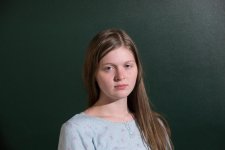I have had an SB-700 for a few years now. I use it with a D3100. I finally am starting to learn the in's and out's of it and as expected, some basic questions pop up. Here are a few to start:
1) When I shoot in TTL mode, there is a little bar graph to the right of the screen of the flash. It gives the range in feet that I should be able to use the flash, I believe. I have learned that there is only one optimal distance for a flash so how can that range they show be so big?? My guess is that the range bargraph includes power adjustments by the flash so that if you are below the bargraph, the flash can not reduce power any more so you will be over-exposed; conversely, if you are above the the upper limit of the bargraph (too far of a distance), the flash has maxed out its power input and the shot would be under-exposed. Is that correct thinking??
2) The illumination pattern adds one more level of complexity for me. Currently, in TTL mode, I use flash compensation to adjust to the proper flash exposure. How do you use the Illumination Pattern? I can see two scenarios: 1) Any wide angle shot, throw the switch to wide angle; and conversely, any close up shot (ie. portrait), throw into the focused (center weighted) mode. 2) The other way I can see it being used would be to use the normal illumination pattern for everything, but then use the wide angle if your light is falling off on the edges, or center weighted when you need to eke out a little more light on your subject or give a silhouette type portrait. I suppose either method will work but since I am a beginner, I just wanted to get a feeling on how other people use it so I can make it a regular part of my routine while I'm still teachable.
3) I really like the GN mode on this flash but I don't see when I would use it since all I hear about in my reading is that direct flash is too harsh, flat, etc. Can someone give me an example of when I would use direct flash (and then maybe GN mode) other than when I am shooting from far and I need every bit of power I can get. I'm not talking about using GN vs. TTL mode, that is well addressed by Wayne in "Four fundamentals", ie. GN is not fooled by the metering, it just gives you the proper exposure at a given distance with the ISO and F stop you have. I guess to simplify my question, When would I want to shot with direct flash?? Maybe the answer is, when I have no other choice!!! But even if I don't have a surface to bounce off of, I can slap on the tupperware diffusion dome to try to soften the light. Does anyone use GN mode??
4) During my practice session, I had my daughter sit eight feet away. I was bouncing between 90 and 60 degrees. Camera was on F 5.6, shutter 1/60 (in A mode), Iso 400, 80 mm on lens. The ceiling is a flat (non-textured white) and is 8 feet high. I was using TTL, not TTL-Bal since I was in single point focus. I too found that in TTL mode, I was getting under-exposed photos and I had to use +2 flash compensation. At that level, I was getting 3 seconds of blinks from the flash. Does this sound right that I am maxing out the flash with this type of basic shot?? I did notice when I upped the iso to 800 or 1600, I had plenty of flash power. It just seems I would never be able to use bounce much at 400 Indoors without maxing the flash out unless I buy a faster lens then the Tamron 18-270mm
1) When I shoot in TTL mode, there is a little bar graph to the right of the screen of the flash. It gives the range in feet that I should be able to use the flash, I believe. I have learned that there is only one optimal distance for a flash so how can that range they show be so big?? My guess is that the range bargraph includes power adjustments by the flash so that if you are below the bargraph, the flash can not reduce power any more so you will be over-exposed; conversely, if you are above the the upper limit of the bargraph (too far of a distance), the flash has maxed out its power input and the shot would be under-exposed. Is that correct thinking??
2) The illumination pattern adds one more level of complexity for me. Currently, in TTL mode, I use flash compensation to adjust to the proper flash exposure. How do you use the Illumination Pattern? I can see two scenarios: 1) Any wide angle shot, throw the switch to wide angle; and conversely, any close up shot (ie. portrait), throw into the focused (center weighted) mode. 2) The other way I can see it being used would be to use the normal illumination pattern for everything, but then use the wide angle if your light is falling off on the edges, or center weighted when you need to eke out a little more light on your subject or give a silhouette type portrait. I suppose either method will work but since I am a beginner, I just wanted to get a feeling on how other people use it so I can make it a regular part of my routine while I'm still teachable.
3) I really like the GN mode on this flash but I don't see when I would use it since all I hear about in my reading is that direct flash is too harsh, flat, etc. Can someone give me an example of when I would use direct flash (and then maybe GN mode) other than when I am shooting from far and I need every bit of power I can get. I'm not talking about using GN vs. TTL mode, that is well addressed by Wayne in "Four fundamentals", ie. GN is not fooled by the metering, it just gives you the proper exposure at a given distance with the ISO and F stop you have. I guess to simplify my question, When would I want to shot with direct flash?? Maybe the answer is, when I have no other choice!!! But even if I don't have a surface to bounce off of, I can slap on the tupperware diffusion dome to try to soften the light. Does anyone use GN mode??
4) During my practice session, I had my daughter sit eight feet away. I was bouncing between 90 and 60 degrees. Camera was on F 5.6, shutter 1/60 (in A mode), Iso 400, 80 mm on lens. The ceiling is a flat (non-textured white) and is 8 feet high. I was using TTL, not TTL-Bal since I was in single point focus. I too found that in TTL mode, I was getting under-exposed photos and I had to use +2 flash compensation. At that level, I was getting 3 seconds of blinks from the flash. Does this sound right that I am maxing out the flash with this type of basic shot?? I did notice when I upped the iso to 800 or 1600, I had plenty of flash power. It just seems I would never be able to use bounce much at 400 Indoors without maxing the flash out unless I buy a faster lens then the Tamron 18-270mm
Last edited:




